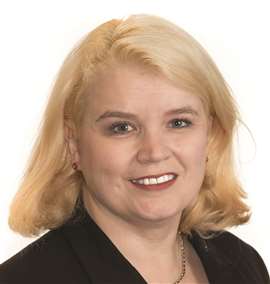The right fit: Why PPE needs to be more inclusive
14 June 2024
Construction teams around the world are working in unsafe conditions due to a lack of suitable personal protective equipment. In the first of a two-part series, Lucy Barnard finds out how standardised PPE based on European male measurements is failing to protect many of the women and men who need it
On 3 June 2023, 42-year-old construction labourer Sujata Sahu, was working on a construction site in the Indian city of Kalyan when she fell from the 15th floor of a building. Rescue workers retrieved her corpse from a fourth-floor duct.
Initially police investigating Sahu’s untimely death treated the matter as just another of the thousands of accidental deaths which occur each year in India’s construction industry, but four months later they converted the case into a criminal investigation against the owners of the construction site, the contractor and labour contractor when it emerged that Sahu had not been wearing a safety harness.
 Indian construction workers (some with hard hats) queue for transport before a shift. Photo: Reuters
Indian construction workers (some with hard hats) queue for transport before a shift. Photo: Reuters
Construction workers across India are regularly seen working on site without any personal protective equipment (PPE) – safety gear ranging from safety harnesses and hard hats to protective gloves and steel toe capped boots.
While both male and female workers frequently complain that they have not been given any safety equipment or PPE by their employers, anecdotal evidence suggests that when PPE is available, both men and especially women are reluctant to wear it.
A 2022 qualitative study of construction workers by the Indian Institute of Technology Guwahati found that although workers all workers questioned were aware that hardhats were provided for their safety, they did not wear them because they found them uncomfortable.
Around a quarter of those questioned said that the safety helmets they had been issued prevented them from being able to see properly while 22% said that the helmet caused hotness, sweating and itching. Another 14% said that the nape strap at the back of the helmet was causing them discomfort. 11% said that the chin strap was causing discomfort.
PPE is made for western men
“Most PPE is made for western Caucasian male bodies,” says Elizabeth Donnelly, CEO at the UK-based Women’s Engineering Society, which has been researching the issue of badly-fitting PPE since 2009. “South Asian men and women tend to be slimmer and shorter so it’s not surprising that the standard sizes often don’t fit. PPE is also generally made for moderate climates so the material is often heavier and not breathable. Manufacturers tend to design clothing and equipment for your standards while European male and don’t take into account any other differences. It’s a big issue.”
 Elizabeth Donnelly, CEO of the Society of Women Engineers. Photo: SWE
Elizabeth Donnelly, CEO of the Society of Women Engineers. Photo: SWE
A 2021 first of its kind study published in BMC Public Health found that, according to official figures, in the city of Delhi alone in 2017, 236 men and 17 women were killed as a result of construction site injuries while another 807 men and 20 women suffered serious injuries. The authors of the report said both sets of figures were likely to be under-estimates due to under-reporting of injuries to the police.
Women are estimated to make up around 20% of India’s 51 million construction workers. They tend to work carrying bricks, mixing concrete, breaking stones and digging ditches - often wearing little more than brightly coloured saris and sandals to shield them from hazards.
“Female construction workers face a not insignificant risk whilst working alongside their male counterparts and hence safety measures such as personal protective equipment that are appropriate and culturally acceptable to Indian women are needed,” says Sajjan Yadav, additional secretary at the Indian government’s Department of Finance and the report’s author.
Although Donnelly points out that better fitting PPE can only be part of a wider solution in India to encourage better workplace safety and enforce existing regulations, she says that a greater availability of differently sized options that properly take account of different ages, ethnicities, cultures and disabilities of wearers could encourage take-up.
A global issue
“This is a global issue,” says Donnelly. “In many cases employers are losing labour hours because workers can’t do they the jobs they are being paid to do or, even worse workers are risking their safety completing tasks wearing inadequate PPE.”
Certainly, men and women around the world conducting site visits (this author included) will have become accustomed to stumbling around busy construction areas in oversized boots and comically large hi-vis vests because they have been told they are the only sizes available. Moreover, PPE is frequently not designed to take into account pregnancy, menopause or critical health conditions.
A survey of 1,614 engineers conducted by the UK-based Women’s Engineering Society (WES) between August 2023 and January 2024, found that only 4% of female and only 16% of male respondents had been able to acquire perfectly fitting PPE.
 Roberta Rincon, research director at the Society of Women Engineers. Photo: SWE
Roberta Rincon, research director at the Society of Women Engineers. Photo: SWE
The research noted that women were disproportionately affected by the lack of appropriate PPE resulting in some choosing not to wear it at all. Some respondents noted that the climbing harnesses, life jackets and air systems they use as part of their role, do not work for their bodies increasing the risks they face in their jobs.
“Over time I had to stop doing work in the workshop because I couldn’t find any gloves that would fit me, was sick of fighting to buy gloves that would fit me and did not have time to wait for delivery of gloves that would fit me,” one respondent reported. “I haven’t been in a position to [do part of my work] in about a year.”
More than two-thirds (68%) of survey respondents said they had raised concerns about ill-fitting PPE with others – usually their employer, colleagues or line manager. However, a third of survey respondents (32%) said they did not raise concerns with anyone for fear of being considered too demanding.
“Older co-worker men considered it funny that short women’s PPE didn’t fit,” adds another respondent. “Once I was told that I didn’t need new PPE and only wanted it to look good in selfies.”
The WES survey also found that although PPE designed for women was becoming more widely available, it is often more expensive than the male equivalent and requires a longer delivery time. Employers often require workers to acquire PPE from specific suppliers with which they have relationships, many of which have a limited or no choice of women’s PPE.
“My shoes, which are smaller than others, are twice as expensive, and in addition my soles are expensive too,” one respondent reported. “The gloves I use are six times more expensive than my male colleagues use.”
“Frequently boots only go down to a size six (US size 8.5, EU size 39-40),” adds Donnelly. “I personally, like many women, take a size five. Moreover, women are not just smaller men. Even if you can get hold of footwear that is supposedly the right size, women’s feet are actually shaped differently with narrower ankles and higher insteps. Women say to us that they frequently have to wear multiple pairs of socks underneath their work boots just to try to make them fit.”
Elsewhere too, women have been highlighting the difficulties they face due to a lack of properly fitting PPE. “Giving female workers men’s PPE puts women at risk, with many having to roll up coverall legs and sleeves, as well as not having appropriately fitting footwear,” Roberta Rincon, director of research and impact at the Society of Women Engineers, the world’s largest advocate for women in engineering which has members in the USA, India, Europe, Brazil and Africa among others. “We saw what happened in a somewhat related incident in March 2019 when the first all-female space walk was cancelled because NASA didn’t have two suits that fit.”
See part two for how employers are responding to the issues raised by badly fitting PPE.
STAY CONNECTED



Receive the information you need when you need it through our world-leading magazines, newsletters and daily briefings.
CONNECT WITH THE TEAM








